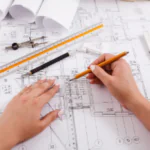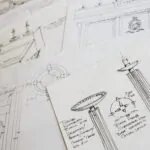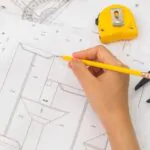Are you curious about the inner workings of some of the greatest inventions of our time? Wondering how inventors bring their ideas to life? Look no further than patent drawing samples! These often overlooked and underutilized resources hold the key to unlocking the secrets behind groundbreaking innovations. In this article, we’ll dive deep into the world of patent drawing samples, revealing their importance and showcasing some remarkable examples.
From intricate mechanical designs to detailed schematics, patent drawings offer a visual representation of an invention’s functionality and structure. They provide a unique glimpse into the minds of inventors, showcasing their creativity and problem-solving abilities. By studying these drawings, aspiring inventors can gain valuable insights into the patent application process and learn from the success stories of the past.
Join us as we explore the fascinating world of patent drawing samples. From iconic inventions to hidden gems, this article will take you on a journey through the visual history of innovation. So grab your magnifying glass and get ready to unlock the secrets behind some of the most revolutionary creations of our time.
Importance of patent drawings in the patent application process
When it comes to filing a patent application, inventors often focus on the written description of their invention, neglecting the visual aspect. However, patent drawings play a crucial role in the application process. They serve as a way to enhance the understanding of the invention, providing a clear and concise visual representation that complements the written description.
One of the main advantages of including patent drawings is their ability to convey complex ideas that may be difficult to explain in words alone. By providing a visual representation, inventors can ensure that their invention is understood correctly by patent examiners, reducing the risk of misunderstandings or rejections. Additionally, patent drawings can also serve as a powerful tool for protecting the invention against potential infringements, as they provide a clear record of the invention’s unique features.
To ensure the effectiveness of patent drawings, it is essential to consider their quality and accuracy. Poorly executed or inaccurate drawings can hinder the patent application process and may even result in the rejection of the application. Therefore, it is crucial for inventors to understand the requirements for patent drawings and to avoid common mistakes that could undermine their application.
Types of patent drawings
Patent drawings come in various types, each serving a specific purpose in the patent application process. The most common types of patent drawings include:
- Utility Drawings: Utility drawings are the most frequently used type of patent drawings. They illustrate the invention’s structure, design, and functionality, providing a comprehensive visual representation of how the invention works. These drawings typically consist of detailed views, cross-sections, and exploded views to highlight specific features and components.
- Design Drawings: Unlike utility drawings that focus on functionality, design drawings emphasize the aesthetic aspects of an invention. They showcase the unique ornamental design of the invention, highlighting its visual appeal and distinctive features. Design drawings are often used for inventions such as consumer products, furniture, or clothing, where the overall appearance is a key factor.
- Flowcharts and Diagrams: Inventions that involve complex processes or systems often require flowcharts or diagrams to illustrate the sequence of steps or the interaction between different components. These drawings provide a visual representation of the invention’s operation, making it easier for patent examiners to understand the invention’s functionality.
Understanding the different types of patent drawings is essential for inventors to choose the most appropriate format for their invention. Selecting the right type of drawing ensures that the invention is accurately represented, maximizing its chances of obtaining a patent.
Understanding the requirements for patent drawings
To ensure that patent drawings are accepted and considered during the patent application process, inventors need to adhere to certain requirements set by patent offices. These requirements may vary slightly depending on the jurisdiction, but some general guidelines apply universally.
First and foremost, patent drawings should be clear, legible, and of high quality. They should be produced using appropriate tools and techniques to ensure accuracy and precision. The drawings should also be in black and white, with shading used only when necessary to convey depth or texture.
Additionally, patent drawings should have consistent numbering and labeling to facilitate reference within the patent application. Each figure should have a clear title or caption that describes its content, and any reference numerals used in the drawings should be explained in the written description.
Another important requirement is the scale of the drawings. Patent offices typically require drawings to be drawn to a specific scale, which should be mentioned in the application. This ensures that the drawings accurately represent the size and proportions of the invention.
Lastly, patent drawings should focus solely on the invention and avoid including unnecessary details or extraneous matter. The drawings should highlight the essential features of the invention without including any irrelevant information that may confuse or distract the examiner.
By understanding and adhering to these requirements, inventors can ensure that their patent drawings meet the necessary standards and contribute effectively to the patent application.
Common mistakes to avoid in patent drawings
While patent drawings can be a valuable asset in the patent application process, they can also become a liability if not executed properly. To avoid potential pitfalls, inventors should be aware of common mistakes that can undermine the effectiveness of their patent drawings.
One common mistake is the inclusion of inconsistent or inaccurate details in the drawings. It is crucial to ensure that the drawings accurately represent the invention as described in the written description. Any discrepancies or inconsistencies between the drawings and the description can raise doubts about the invention’s integrity and may result in the rejection of the application.
Another mistake to avoid is overcrowding the drawings with unnecessary information or cluttered illustrations. Patent drawings should be clear, concise, and focused on the essential features of the invention. Including too many irrelevant details or complex illustrations can make the drawings confusing and difficult to decipher, reducing their effectiveness in conveying the invention’s unique aspects.
In addition, inventors should avoid using shading excessively or inappropriately. Shading should only be used when necessary to convey depth or texture and should not be overused to create unnecessary visual effects. Excessive shading can obscure important details or make the drawings difficult to interpret, potentially leading to misunderstandings or rejections.
Lastly, inventors should be cautious when using dotted or broken lines in their drawings. These lines are commonly used to represent hidden or non-visible parts of the invention. However, their usage should be consistent and clearly explained in the written description to avoid confusion or misinterpretation.
By being aware of these common mistakes and taking the necessary precautions, inventors can ensure that their patent drawings are accurate, clear, and effective in supporting their patent application.
Tips for creating effective patent drawings
Creating effective patent drawings requires careful planning and attention to detail. Here are some tips to help inventors create drawings that enhance their patent application:
- Start with a rough sketch: Before diving into the final drawings, it is helpful to create a rough sketch to visualize the overall layout and composition of the drawings. This allows inventors to experiment with different ideas and make necessary adjustments before committing to the final version.
- Focus on clarity and simplicity: Patent drawings should prioritize clarity and simplicity to ensure that the invention is easily understood. Use clear lines and well-defined shapes to represent the various components of the invention. Avoid unnecessary details or complex illustrations that may confuse the viewer.
- Use consistent numbering and labeling: Consistent numbering and labeling of the drawings make it easier to reference specific figures within the patent application. Ensure that each drawing has a clear title or caption and that any reference numerals used are explained in the written description.
- Follow the required scale: Adhering to the required scale ensures that the drawings accurately represent the size and proportions of the invention. Make sure to mention the scale used in the application and ensure that the drawings are drawn accordingly.
- Seek professional help if needed: If creating patent drawings is beyond your expertise, consider hiring a professional patent illustrator. A skilled illustrator can ensure that the drawings are of high quality and meet all the necessary requirements. Their experience and expertise can contribute significantly to the success of your patent application.
By following these tips, inventors can create patent drawings that effectively represent their invention, enhance their patent application, and increase their chances of obtaining a patent.
Examples of well-executed patent drawings
To truly appreciate the value and impact of patent drawings, let’s explore some examples of well-executed drawings that have played a significant role in the success of various inventions.
One notable example is the patent drawing for the Wright brothers’ flying machine. This drawing, filed in 1903, showcases the intricate details of the aircraft’s structure and design. It effectively conveys the concept of wing warping, a critical innovation that enabled controlled flight. The drawing played a crucial role in securing the patent for the Wright brothers’ invention and solidifying their place in aviation history.
Another remarkable example is the patent drawing for Thomas Edison’s electric lamp, filed in 1880. This drawing illustrates the complex inner workings of the incandescent light bulb, showcasing the arrangement of the filament, electrodes, and other essential components. The drawing not only aided in the understanding of Edison’s invention but also served as a blueprint for future advancements in lighting technology.
These examples demonstrate how patent drawings can provide a visual narrative of an invention’s development and functionality. They serve as a testament to the importance of clear and accurate drawings in the patent application process.
Resources for finding patent drawing samples
For inventors seeking inspiration or guidance in creating their patent drawings, various resources are available to access a wide range of patent drawing samples.
- United States Patent and Trademark Office (USPTO): The USPTO website offers a searchable database of patents and patent applications. Inventors can search for specific inventions or browse through different categories to find relevant patent drawings.
- Google Patents: Google Patents is another valuable resource for finding patent drawing samples. The platform allows users to search for patents worldwide and provides access to millions of patent documents, including their drawings.
- Professional Patent Illustrators: Many professional patent illustrators have portfolios showcasing their work. Exploring their websites or contacting them directly can provide inventors with a glimpse into the quality and style of their drawings.
By leveraging these resources, inventors can gain insights and inspiration from a vast collection of patent drawing samples. Analyzing and studying these drawings can help inventors understand the visual representation of inventions and apply those principles to their own patent drawings.
Hiring a professional patent illustrator
While creating patent drawings independently is possible, hiring a professional patent illustrator can significantly enhance the quality and effectiveness of the drawings. A professional illustrator has the expertise and experience to create accurate, precise, and visually appealing drawings that meet all the necessary requirements.
When selecting a professional patent illustrator, it is important to consider their qualifications, experience, and portfolio. Look for illustrators who specialize in patent drawings and have a proven track record of successful patent applications. Requesting samples of their previous work can give you a sense of their style and attention to detail.
Collaborating with a professional patent illustrator can save inventors time and effort, allowing them to focus on developing their invention and preparing the patent application. The illustrator’s expertise ensures that the drawings accurately represent the invention, increasing the chances of a successful patent application.
Conclusion
Patent drawing samples are an invaluable resource for inventors, offering a visual representation of groundbreaking innovations and providing insights into the patent application process. By understanding the importance of patent drawings, the types of drawings available, the requirements to adhere to, and the common mistakes to avoid, inventors can create effective patent drawings that enhance their patent applications.
Whether studying well-executed patent drawings or utilizing resources to find inspiration, inventors can unlock the secrets behind some of the most revolutionary creations of our time. The world of patent drawing samples is waiting to be explored, offering a glimpse into the minds of inventors and the visual history of innovation.
So, grab your magnifying glass and embark on a journey through the fascinating world of patent drawing samples. Discover the hidden gems and iconic inventions that have shaped our world, and let these insights inspire you on your own path to innovation. With the right patent drawings, you too can bring your ideas to life and make a lasting impact.






